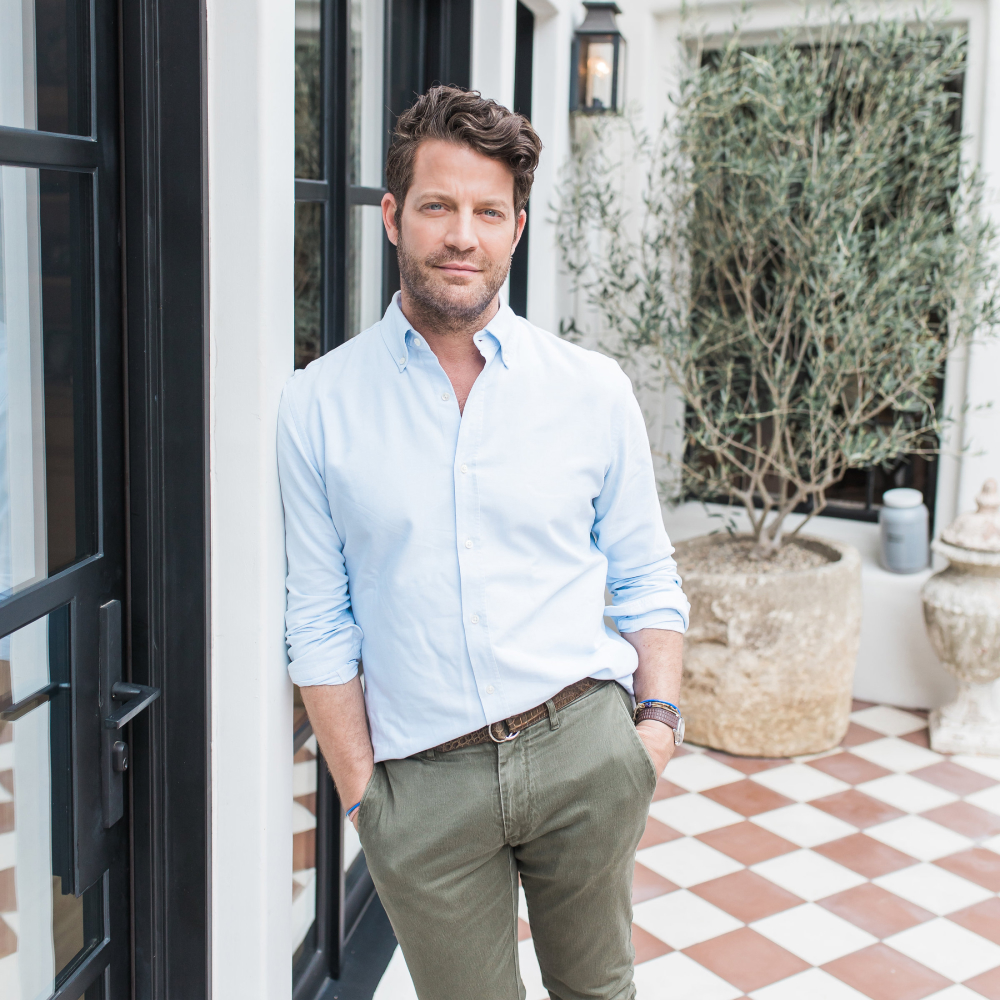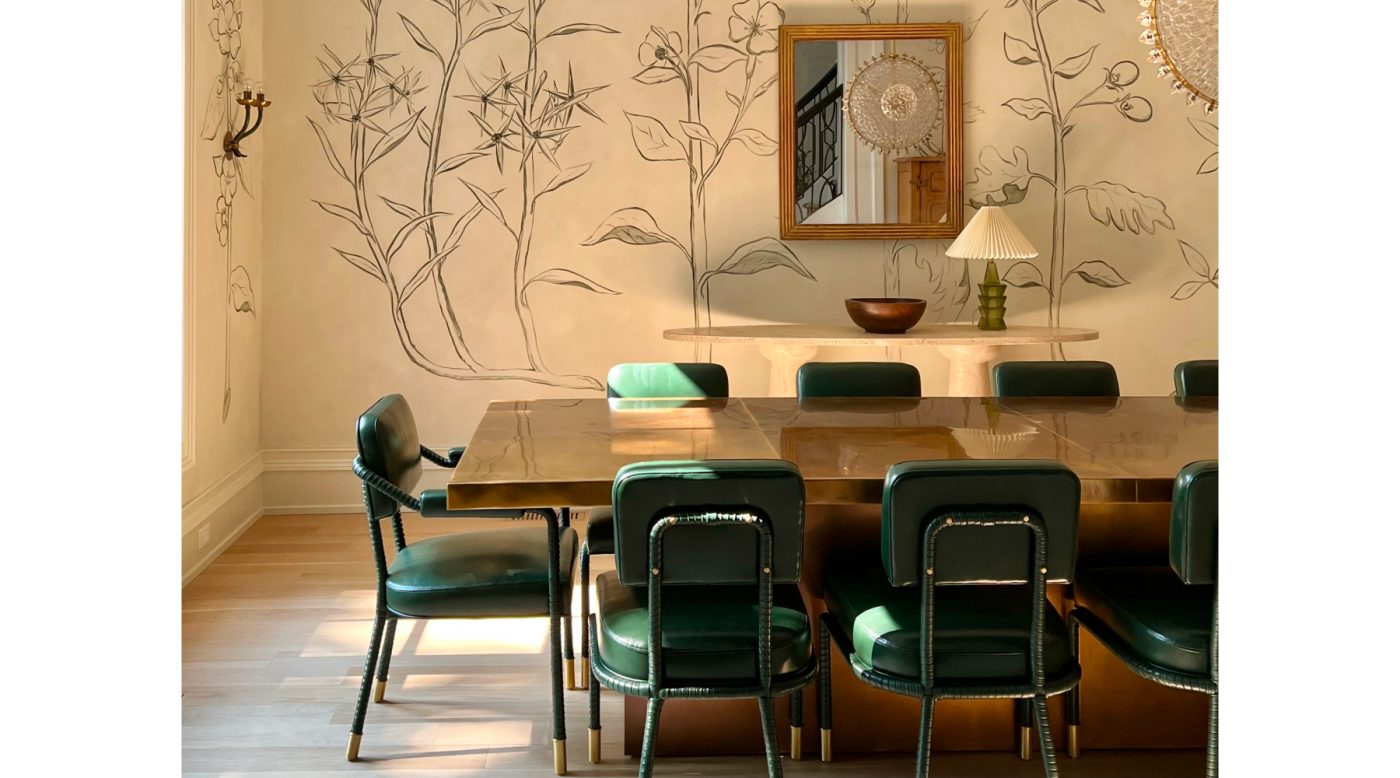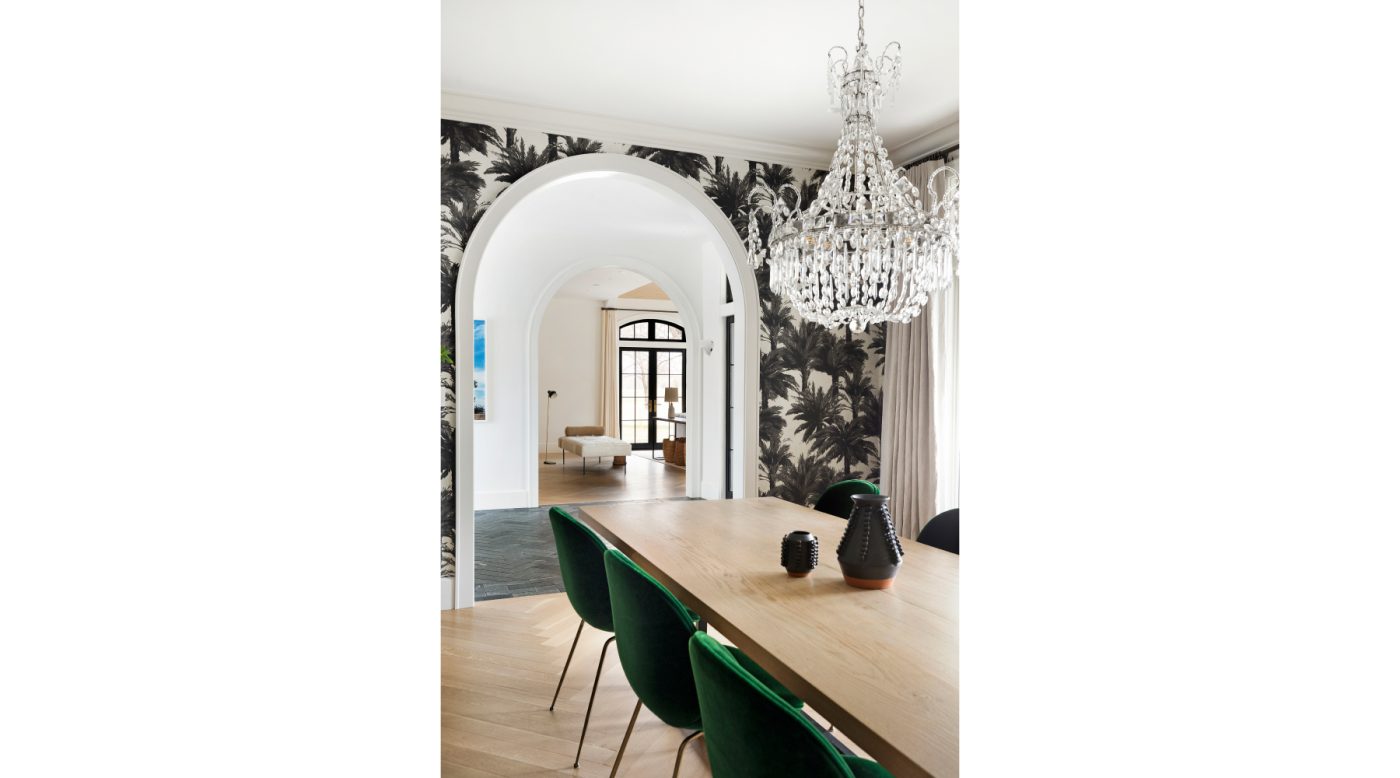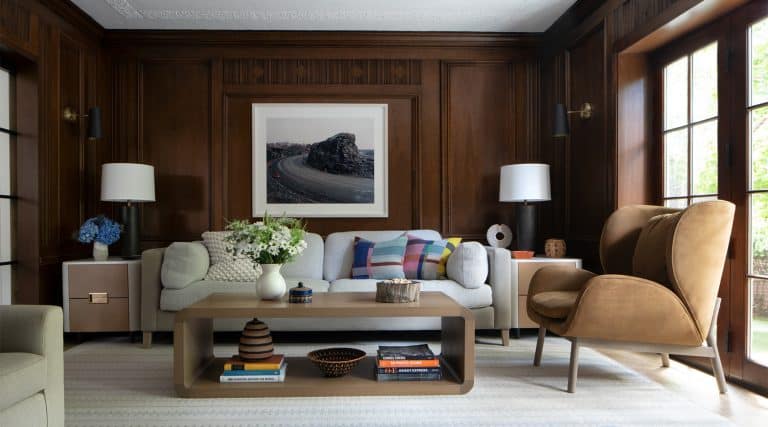June 9, 2024Nate Berkus has been a force shaping the cultural zeitgeist ever since 2002, when he first appeared on the Oprah Winfrey Show as a telegenic interiors guru offering home-design solutions for Oprah’s many millions of viewers.
Just seven years earlier, after working for Leslie Hindman Auctioneers, in Chicago, and costume-jewelry designer Dominique Aurientis, in Paris, he’d started his own design firm in the Windy City, where Oprah then famously lived and worked. She met him after some of her producers attended one of his openings — Nate used to have a Chicago art gallery as well. Then, months later, he was asked if he would do a small-space makeover in Boston for the show.

Today, Nate has offices in Chicago, New York and Los Angeles. His design practice, known for the relaxed, modern elegance of its aesthetic, has continued to thrive, even as he has pursued countless other endeavors, writing several books, creating product lines for home-furnishings companies like Kravet, even appearing on reality TV. For three years, he starred in a decorating show on TLC along with his husband, Jeremiah Brent — an in-demand interior designer in his own right, whose new book, The Space That Keeps You: When Home Becomes a Love Story, was released shortly before he joined the cast of Netflix’s Queer Eye earlier this year.
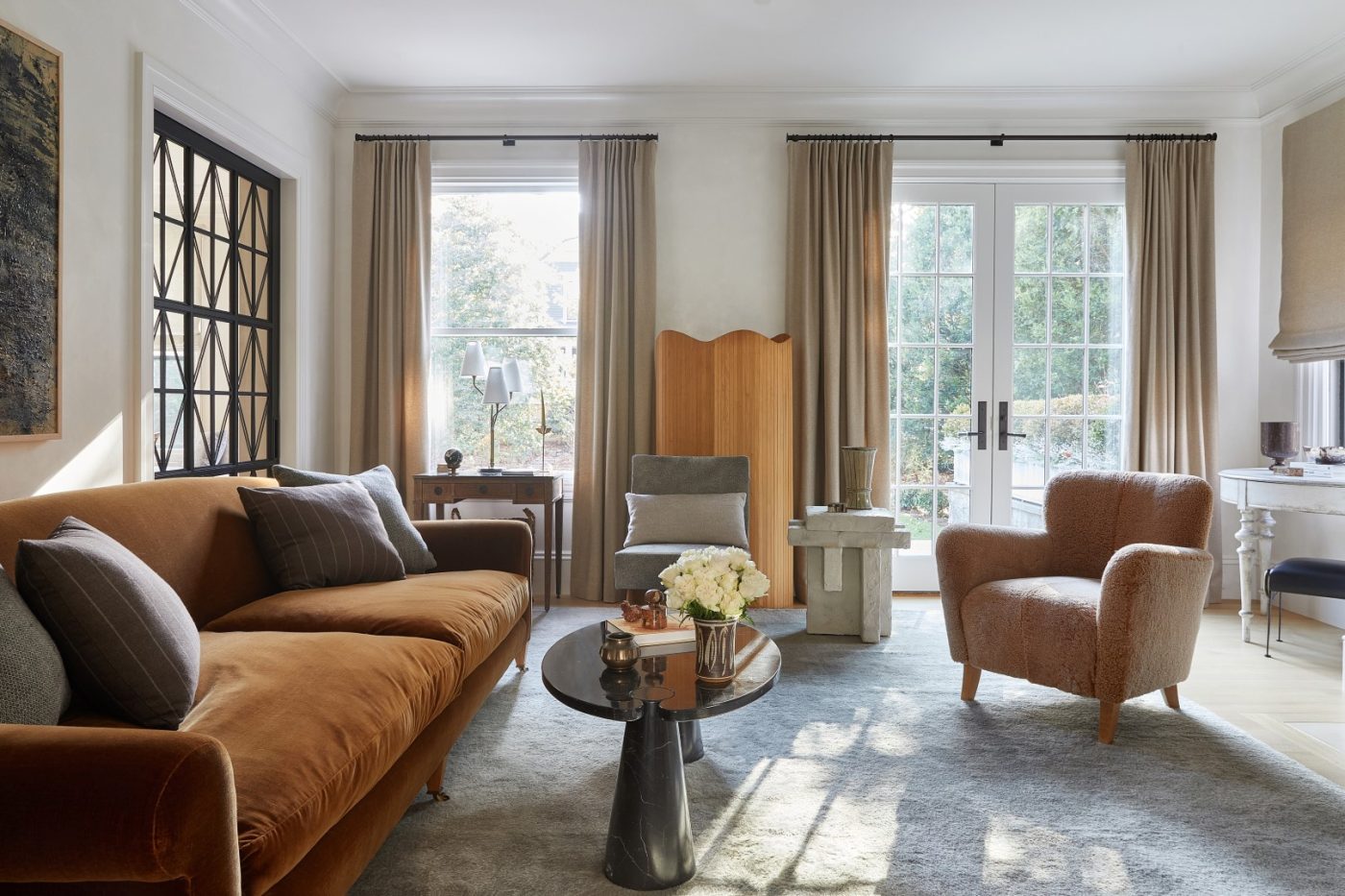
Amid all this, Nate and Jeremiah managed to move back and forth between the East and West Coasts — changing houses a total of 10 times in 10 years — and to start and grow their family. They welcomed Poppy, now nine, and Oskar, now six, into their happy couplehood and their many happy homes.
I first met Nate in the early 1990s, and since then, he has become one of those friends you can never get enough of. His charm and humor and sense of fun are a tonic. Together with Jeremiah, he personifies everything wonderful I can think of: living your best life, creating a loving family and working hard and happily doing what you love.

And giving back! Nate has long been a philanthropic pillar of the design world, lending his name and presence to a huge array of charitable causes and events, many focused on the LGBTQ+ community. For this year’s June Pride Month, he has curated a selection of pieces from the 1stDibs Pride Collection offered by LGBTQ+ sellers and partnered with 1stDibs to benefit Housing Works. He has for years supported the nonprofit, whose mission is to provide safe, secure and stable housing to homeless New Yorkers living with HIV/AIDS and/or other chronic health conditions. “Housing Works is a truly great organization, with a long history of advocacy in New York,” he tells me. “They have married design, community and giving back in such a gracious way and were the perfect partner for this Pride campaign.”
I spoke with Nate recently about the LGBTQ+ design community, his advice for budding designers, his own homes and more.


The design world has shown great generosity toward LGBTQ+-focused organizations, and that’s so important to you, too.
Jeremiah and I both feel that we have an obligation to honor those who came before us and helped us live the life that we feel very lucky to have. We’re the beneficiaries of the political, economic and social gains that they fought for.
That was never more apparent to us than when we were having our kids. We were very conscious of how wins in the political, legal, medical and scientific worlds allowed us — two men married to each other — to have children via surrogacy.
When I think about my responsibility as a gay man in the public eye whose word could have influence, I feel an obligation to live a life that’s full and honest and open and filled with gratitude to the generations that came before me who made it possible.
I’m proud to be a part of the design world, a community that’s been a very friendly industry to LGBTQ+ people. I’m proud to have a thirty-year-old business in an industry that’s welcoming and accommodating. It’s often the dream of the young gay or bi or trans person living in a non-coastal city to come to a place like New York City and make it in this business. So, for me it’s an enormous honor, but it’s a conscientious honor.

As we go into Pride month, there’s so much to celebrate — how far we’ve all come in compassion and love for and understanding of one another. What do you see as the most important work still to be done?
Listen, there’s still a tremendous amount to do until every child around the globe doesn’t feel any fear around their sexual orientation or gender identity. There are still a lot of people who feel alone, and there are still a lot of people who feel afraid to come out of the closet, who are afraid to live their life openly and honestly, because they can’t. There’s a tremendous amount of gratitude for the work that’s been done to date, and I have a tremendous amount of hope for the work that still remains.
You know, there are still moments when Jeremiah and I will be walking through a town or a city with our two children, and we’ll sense a sort of discomfort: Are those two dads? Is that a family?
We’re raising our kids to know that not every family looks the same. It’s not that some families are right and some families are wrong. We tell our kids that not every family has two dads, and not every family has two moms, and not every family has a dad and a mom. Some families don’t have any mom or dad, some families have a grandparent. And if you dig a little bit deeper, every family is a little bit different because we’re all a little bit different, and that’s great.
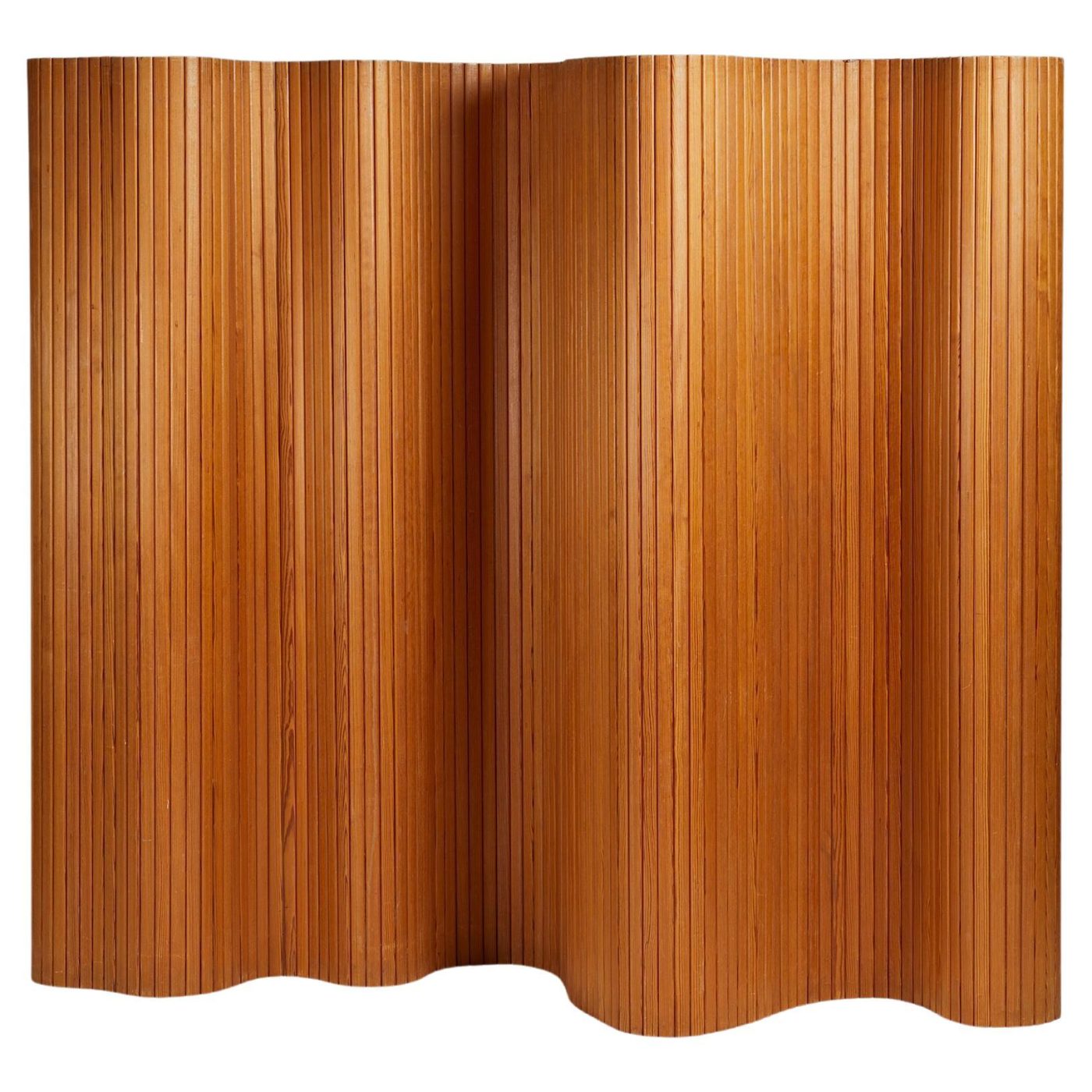
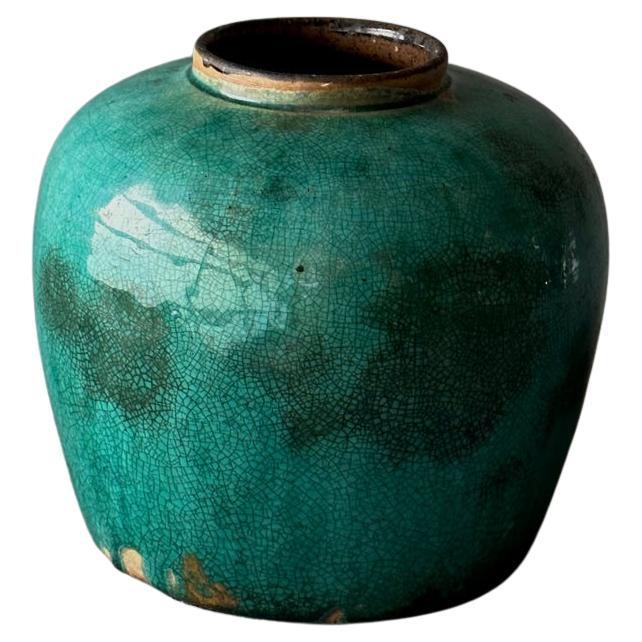
Is there more the design industry could be doing for the LGBTQ+ community?
I don’t think it’s specific to design. Regardless of what influence you might have, or what your job entails, whatever anyone can do to make all people feel valued and welcome is what we all should be doing, whether you’re a shelter magazine editor picking the couples and families that are featured in a home story or you’re a business owner in a small town and a pair of future husbands comes to you for a wedding cake.
Turning now to your business experience, what would you say to a young designer coming to you asking, “Where do I start?”
I think something young designers are missing is practical experience. I come from the age of internships. I got ice-cream cones for everybody and packs of cigarettes and had shoes resoled and worked for an auction house and a department store.
Experiences like those let you be in the orbit of people doing things you think are interesting, even though you’re just Windexing someone’s desk. It didn’t matter to me. And I still firmly believe in that.
Practical experience teaches you how to speak to people and how to conduct yourself in a professional environment — or how to choose not to conduct yourself in a professional environment.

Anything else?
I think the other big thing that’s missing is the ability to understand design references. The advice I always give to young designers is that it’s not enough to see an image of something you like and just post it on Instagram. If it strikes you as beautiful or thought-provoking or fascinating enough to digest into your point of view, then do some research into the image.
Find out who designed it, what furniture makers are included, maybe even the origin of the color theory in the space.
There’s really no excuse anymore not to educate yourself. It used to only be rich people who could fly off to Paris and walk around the flea markets and wander through the museums. But now anyone can search the Internet for any new reference they see or hear and in a matter of seconds have an understanding of who Charles de Beistegui was and why Château de Groussay was interesting and important or why the comtesse de Noailles took such a hard left turn when she decided to use slip-covered cotton furniture in her Jean-Michel Frank–designed hôtel particulier.
When you sit with a bunch of fifty-year-old designers, they all know that stuff, but the young kids don’t, and they need to.


There’s nothing more interesting than pursuing the history of an object or a place or a design movement. What periods or designers do you find particularly enriching?
For me, it’s the nineteen forties and the nineteen fifties in France. I just can’t get away from it, as far as I try to depart. I’m a classicist and a traditionalist in some ways, and I have a very vast knowledge of nineteenth-century furniture and brown English furniture and Swedish furniture, painted furniture and all of that. But what really makes me explode with sort of this passionate collector’s kind of sentiment is French pieces from those two decades.
Just the materiality, the simplicity, the rarity, the form, the juxtaposition of those shapes with Beaux-Arts architecture. All of it is just like, give me a Giacometti table in an eighteenth-century room, and I’m done.

Speaking of creating your ideal interior, it’s so interesting that you and Jeremiah now live in New York in an apartment you’d previously lived in ten years ago, before your move to L.A. That’s a very unusual thing to do, right?
Yeah, it’s very unusual. It was really more Jeremiah’s dream than mine. I was okay living where we were, in a townhouse in the West Village we had renovated and made really wonderful. It was like we lived on Sesame Street, and that felt right.
But the return to this apartment, where our daughter was born, where we lived when we were first married, it was like it was a return to this new version of ourselves and our family. And it represented a chance to make every design decision that we wished we could have done the first time around but couldn’t afford.
We realized this was the moment to dig up the tile in the foyer and use these old terracotta salvaged tiles. We realized this was the moment to find out what the dining room would look like with a wall of antique mirrors that reflected light back from the kitchen — something we had always wondered about.
We did sort of a systematic renovation where each long-held dream came true.
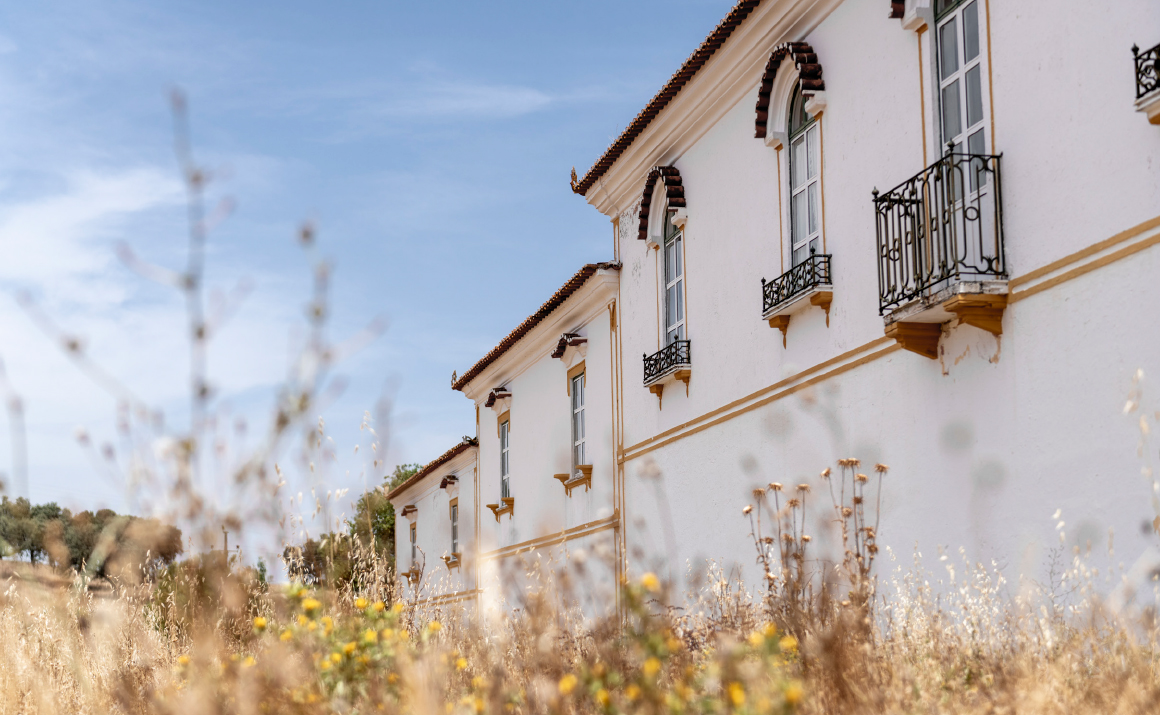
And now tell me about the house that you and Jeremiah are doing together for your family in Portugal.
It’s a farm technically, and it’s got five buildings on it. One is eighteenth century and one is nineteenth century. The first is a pure farmhouse, with low ceilings and exposed beams and slate floors. But the nineteenth-century house is like a little bit of a pastiche. It’s got these eleven-foot windows that open out with French Regency–style ironwork hardware, plus hand-painted ceilings, crumbling tapestries and weird details from a really appalling nineteen-seventies renovation. We’re working on that structure first, even though the older one is much more interesting and much chicer.
The newer one just offers a nicer way to live: high ceilings, flowing drapery, frescos. It’s funny, Jeremiah’s such a modernist and such a purist, but he loves anything old and real and antique, too, and yet even in this scenario, both of us looked at the older place and thought to ourselves, “Yeah, that’s really cool, but I’m gonna be over in the ballroom of the other house.”
So, do you think having this amazing project is going to influence or expand your design repertoire?
I think it’s probably going to bankrupt us. That’s what I think.
